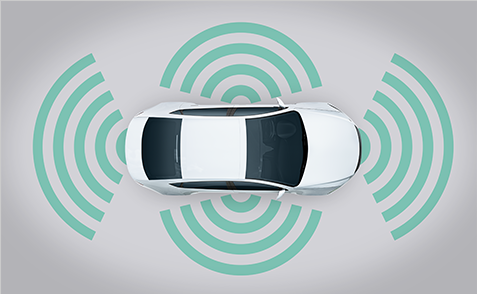An Advance Driver-Assistance system (ADAS) is any of a group of electronic technologies that assists drivers in driving and parking functions. Almost all vehicle accidents are caused by human error, which can be avoided with an Advanced Driver-Assistance system. Safety features are designed to avoid crashes and collisions by offering technologies that alert the driver to problems. The role of ADAS is to prevent injuries and death by reducing the number of car accidents and the seriousness of those that cannot be avoided. Through a safe human-machine interface, ADAS Increases car and road safety. ADAS uses automated technology, such as Sensors and cameras, to detect nearby obstacles or driver errors, and respond accordingly. ADAS can enable various levels of Autonomous driving, depending on the features involved in a car.

Essential Safety – critical ADAS applications include:
. Pedestrian detection/avoidance
. Lane departure warning/ correction
. Traffic sign recognition
. Automatic emergency braking
. Blind spot detection
These lifesaving systems are key to the success of ADAS applications. They incorporate the latest interface standards and run multiple vision-based algorithms to support the real-time multimedia, vision, coprocessing, and sensor fusion subsystem.
The modernization of ADAS applications is the first step towards realizing Autonomous vehicles.
According to a 2021 research report from Canalys, approximately 33 percent of new vehicles sold in the united states, Europe, Japan, and China had ADAS features. The firm also predicted that fifty percent of all Automobiles on the road by the year 2030.

How does ADAS work?
Automobiles are the foundation of the next generation of the Mobile connected device, with rapid advances being made in autonomous vehicles. Autonomous vehicle solutions are partitioned into various chips, called systems on a chip (SoCs). These chips connect sensors to actuators through interference and high-performance electronic controller units (ECUs).
Self-driving cars use a variety of these applications and technologies to gain 360-degree visions both near and far. That means hardware designs are using more advanced process nodes to meet ever-higher performance targets while simultaneously reducing demands on power and footprints.

What are ADAS applications?
Many significant changes were being in automotive vehicles to ensure the safety of vehicles and drivers. Today these safety measures actively improve in a form of an ADAS system with the help of embedded Vision by reducing the number of accidents on the road.
The implemented cameras involve a new AI function that uses sensor fusion, similar to how the human brain process together and combines them to get the best result. This technology even works faster than a human brain.
These are some of the most common ADAS applications:
Adaptive cruise control
Glare-free High beam and pixel light
Adaptive light control
Automatic parking
Autonomous valet parking
Navigation System
Night vision
Unseen area monitoring
All these technologies together create a strong and advanced ASAD system.
Active ADAS Systems :
In an Active ADAS system, the vehicles take direct action. Example of Active ADAS system:
Automatic Emergency Breaking
Emergency Steering
Traffic Jam Assist
Self Parking
Adaptive Cruise Control
Lane-keeping Assist and centering.
ADAS system is a wonderful change in the automotive world. This should be compulsory in every car to reduce car accidents.
Also Read: Mahindra Rocket: Mahindra XUV300




